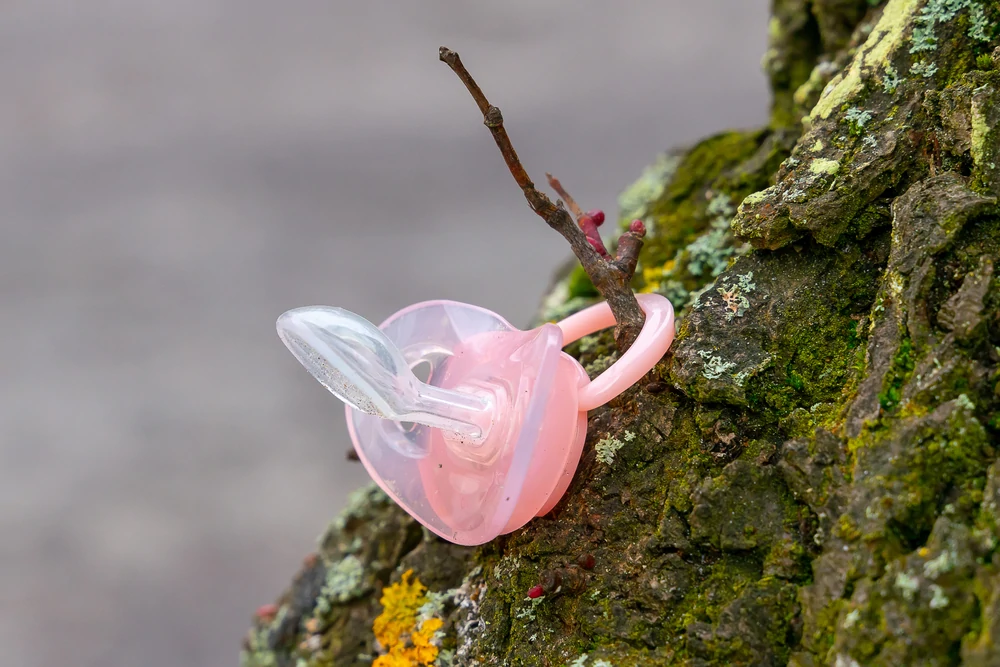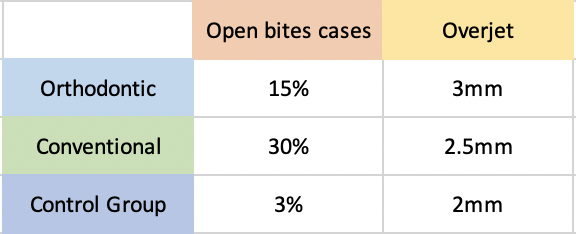This is why you don’t need an Orthodontic Pacifier
 Have you been wondering if your child needs an orthodontic pacifier?
Have you been wondering if your child needs an orthodontic pacifier?
There are several studies on pacifiers in general about the effects that they have on children’s dentition, but there aren’t many studies particularly on orthodontic pacifiers.
We have found that an orthodontic pacifier has advantages over a conventional pacifier, but only if it is being used above the recommenced age. If pacifiers are used by the baby only up to 2-3 years old, then there won’t be a significant difference in what type of pacifier is used.
This is the reason why on our top picks for newborn pacifiers we do not give a preference to orthodontic pacifiers.
Before we look into what we have found, consider that children should be discouraged of using a pacifier after age 3.
The study referenced in this page are for children ages 2-5, when teeth are already out and their face is developing to accommodate their permanent teeth. These are children that are using a pacifier past their recommended age.
What is an orthodontic pacifier? permalink
An orthodontic pacifier is a pacifier that like all others has a shield, a ring and a nipple but the nipple has a flat side. The flat side of the nipple will rest against the tongue of the baby. The intention is that this flat area of the nipple allow for a more flattened shape of the whole nipple, and therefore it protrudes less and pushes less against the teeth. The hope is that with less pressure on the teeth they would not be shifted as much from their normal position in the mouth.
Are there studies between conventional and orthodontic pacifiers? permalink
We have found only one study comparing the two pacifier types. The studies do not involve many children, only 79 children, which is a sample too small and should be taken just as a preliminary study. In any case, these are the findings.
This particular study had 3 groups: a control group, an orthodontic pacifier group and a conventional pacifier group.
A questionnaire was given to the parents about their child’s to better understand the child’s habits, that asked about the intensity (read duration of use per day) and duration in months until the child stopped using the pacifier, including the age it started and stopped the use. Based on this information it allowed the subjects to be placed into three groups, as the control group that had no pacifier use, the ones that used orthodontic pacifier and the conventional one.
The children were then examined for some malocclusions. Some of them had no difference in all three groups, like “canine and molar relationships” and “posterior crossbite”. They were observed with the same frequency in all groups.
The malocclusions that were different on the several groups were overbite and overjet

Our teeth are supposed to have an overbite, it is only bad when the overbite is too excessive or when there’s not enough overbite (in that case we will have an open bite).
The study has found that conventional pacifier users will more often have an open bite (30%). The orthodontic pacifier users were also found to have open bites, but it was only half as common (15%). Weirdly enough the severity of the open bite was the same in both type of pacifiers. The control group barely had open bites (3%)
An overjet is a different concept, it will instead describe how much our teeth point forward.
The overjet was more accentuated in orthodontic pacifier users (3mm) where the conventional pacifier users had (2.5mm) and the control group at (2mm).
Here’s a table to help see the differences:

My child has already started to develop an open bite/overjet permalink
This is unfortunate. However there are studies that show that both overjet and open bite from pacifiers tend to correct themselves over time. If your child still uses the pacifier then this is the time to discourage its use. Here are some ideas on how you can discouraging the use of pacifier
Conclusion permalink
Pacifier use on children older than age 2 will cause an open bite and overjetting of teeth, on both conventional and orthodontic pacifiers. The open bite is worse on conventional pacifier users.
The important conclusion to take from this is that pacifier use should be discontinued by age 2. Before that age, it will not matter which type of pacifier is used.